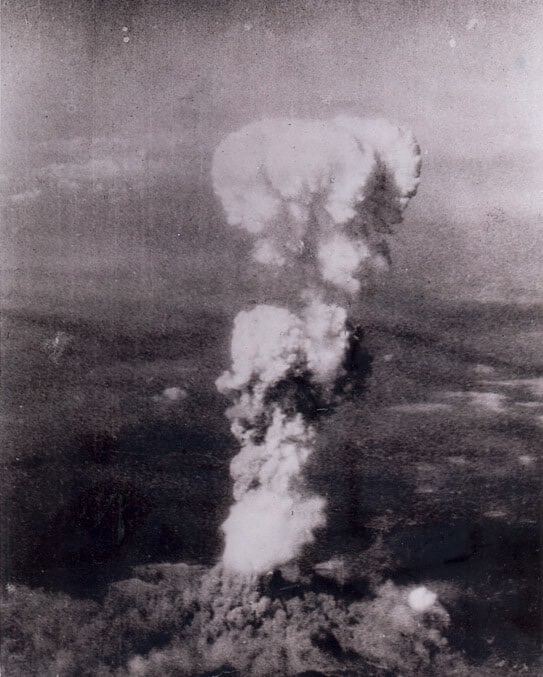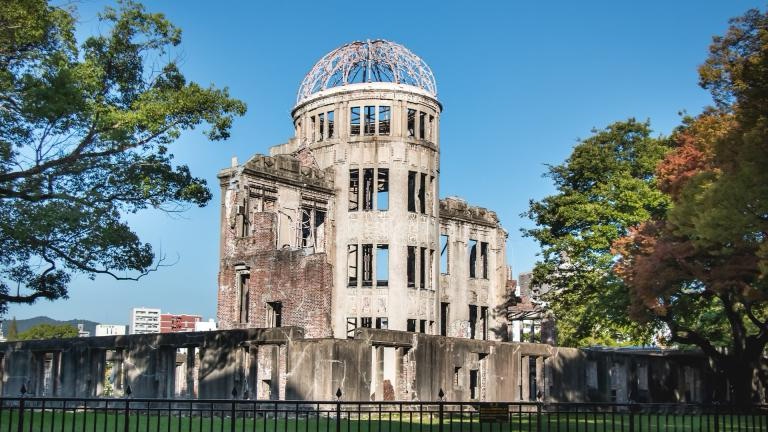In August 1945, the world was forever changed when the United States dropped atomic bombs on Hiroshima and Nagasaki, marking the first and only use of nuclear weapons in war. While these bombings accelerated the end of World War II, the human cost was immense, with an estimated 150,000 to 246,000 civilians losing their lives. Each year, Japan commemorates these tragic events with memorials to honor the victims and to advocate for global peace. Let’s take a closer look at the Hiroshima and Nagasaki Peace Memorial Ceremonies, along with other key events.
The Atomic Bombings of Hiroshima and Nagasaki

After the war in Europe ended, the Allies gave Japan an ultimatum: surrender or face devastating consequences. When no agreement was reached, the U.S. prepared for the most destructive airstrikes in history.
On August 6, 1945, at 8:15 a.m., the first atomic bomb was dropped on Hiroshima, a crucial logistics hub for the Japanese military. The aircraft, piloted by Colonel Paul Tibbets, unleashed a bomb that devastated the city. Describing the aftermath, Tibbets recalled, “The whole sky lit up when it exploded… there was nothing but a black boiling mess hanging over the city… you wouldn’t have known Hiroshima was there.”
Three days later, on August 9, 1945, Nagasaki, a significant seaport, was bombed at 11:02 a.m. Although the bomb was more powerful than the one used on Hiroshima, the hilly terrain surrounding Nagasaki helped reduce the scale of the destruction. Nevertheless, the Radiation Effects Research Foundation estimates that between 60,000 and 80,000 people perished as a result of the bombing.
Hiroshima Peace Memorial Ceremony
Hiroshima, now a bustling city filled with shrines, temples, and peaceful green spaces, holds its annual Peace Memorial Ceremony on August 6. The ceremony takes place around the Hiroshima Peace Memorial and the Hiroshima Victims Memorial Cenotaph. People from around the world gather to hear the Mayor’s Peace Declaration, urging the abolition of nuclear weapons. At 8:15 a.m., the exact moment the bomb fell, the Peace Bell rings to mark a minute of silence in memory of the victims.
Alongside the main ceremony, various events occur across the city. One of the most moving is the illumination of the Motoyasu River with floating lanterns, each bearing messages of peace and hope. Visitors can also take part in a Hiroshima Peace Tour, which shares the harrowing stories of survivors and the impact of the bombing on civilians.
Nagasaki Peace Memorial Ceremony
On August 9, Nagasaki hosts its own Peace Memorial Ceremony to honor those who died in the second atomic bombing. Held at Nagasaki Peace Park, located near the bomb’s hypocenter, the event brings together local residents, survivors’ families, and anti-nuclear activists from across the globe. The ceremony, led by the Mayor of Nagasaki, calls for an end to nuclear weapons. Visitors to the park can also explore the ‘Peace Symbols Zone,’ which features monuments from different nations, including ‘Protection of Our Future’ from the Netherlands, ‘Constellation Earth’ from the U.S., and ‘Triumph of Peace over War’ from Argentina.
The Peace Crane Project
The Peace Crane Project is a global initiative encouraging young people to fold and exchange origami cranes, sending messages of peace across borders. This project is inspired by the story of Sadako Sasaki, a Hiroshima bombing survivor who developed leukemia—what was known as an ‘atomic bomb disease.’ While hospitalized, a friend told her that folding 1,000 paper cranes could bring healing. Sadako began folding cranes but tragically passed away at 12 years old, before reaching her goal. Her cranes have since become a symbol of peace and hope. In 1958, a memorial was erected in her honor at the Children’s Peace Monument in Hiroshima Peace Park, serving as a poignant reminder of the many children lost in the bombings.
Together, these ceremonies and initiatives reflect Japan’s enduring commitment to remembering the past and promoting a future of peace without nuclear weapons.
